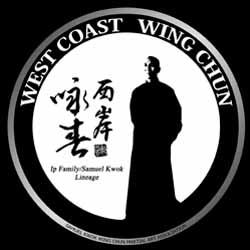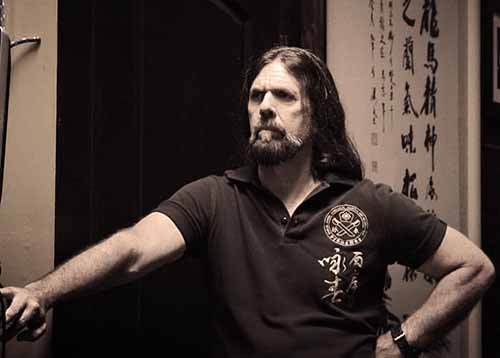Can I learn Wing Chun at Home?
Five Steps to Learning Wing Chun
When looking to learn Wing Chun at home, in-person or online, the process of learning Wing Chun will be similar for each. There are five steps we have put together to guide you in your process of learning. Study and apply these steps to gain maximum benefit from your training in any format.
You can read them in our article on “Can I Learn Wing Chun Online?”
Guidelines to Choosing a Sifu & Lineage
No matter which method of learning you will be utilizing – at-home, in-person or online – you must first choose a reputable lineage and Sifu to learn from. This can feel overwhelming to the novice, so we have put together guidelines for choosing a Wing Chun School, Sifu or Lineage.
Even if you are learning from books and video, it is important that you stick to one Sifu and not gather bits and pieces of information from many different sources. The problem with the patchwork quilt approach to learning Wing Chun is that without proper in-depth training, it is difficult to discern good information from bad information.
Because Wing Chun is a Principle and concept based art, without memorized technique, its application is not definitive, but is limitless. Unfortunately, there is more bad information out there in video format and print (including both magazines and books) than there is good. So, do yourself a favor and read that article.
Structure at Home Training
Learning Wing Chun at home takes discipline. If you are not in a real-time online class or in-person where you meet at specific times, then when you study and train is left up to you. For some this is not difficult at all. For others, it is daunting.
Structure is meant to support you, not control you.
Sifu Kimmy Squiers
The above quote is my own. I’ve included it here because, although I thought of it in terms of Ma Fong or Structural Integrity in Wing Chun, in applies in all areas of life. Structure is generally thought of as confining, but when used properly and with the correct intent, it does just the opposite.
Structure in terms of training should support your life, goals and passion for the art. At the same time, it should help you avoid the pitfalls of inertia. Remember, a Wing Chun Principle is “No Balance, No Power.” Create a schedule that keeps you motivated, but does not overwhelm you.
Schedule
How Often You Should Train
Aim to train daily, but allow yourself the flexibility in the schedule to back off when you need to. Allow yourself up to two days off, at the most, per week. If you set your schedule like this, you make room for the inevitable – life to throw you a curveball. If you get mildly sick or work is pressuring you, or your family is feeling neglected, you have given yourself a schedule that supports taking care of the priorities in your life without ditching your training altogether. Your training should be a priority too.
How Long You Should Train Daily
If you have trouble committing to new endeavors for the long term, begin training ten minutes daily. Ten minutes is not a lot of time to train, but the key is to train with focus and consistency. It is better to train for ten minutes with focus than an hour with no intent. It is better to train ten minutes per day at least five times per week than it is one hour weekly (unless you are taking a class) because accumulative, consistent effort will create momentum. Accumulated momentum will yield greater results, and more importantly a greater desire to train.
How to Train Yourself to Be Disciplined
Once you have mastered training ten minutes a day, gradually increase your training time from ten minutes to fifteen minutes, then fifteen to twenty, and so on, until you have reached a daily training time that fits comfortably within your life.
Training in this way will set you up for success. Too often students decide to embark on learning something new, they become overly excited and take on more than supports them.
"No Balance No Power"
If you do not have trouble with long term commitments, then train what feels appropriate for you to handle long term. Many people can train a half-hour a day. As your commitment towards training the art increases with your passion for it, go above and beyond that. Whatever you choose, make sure to keep balance with the rest of your life. Your success in learning Wing Chun for the long haul is tied closely to your consistency and ability to strike a balance between training and everything else.
Mastery
Mastery is another beast. Just know that mastery of anything comes from the joy of doing it. It comes from the willingness to plateau and not see improvement for long bouts of time. You cannot overly-criticize and cannot be a slacker.
It takes guts, courage, and determination.
You can read all about helpful mindset and how to avoid the pitfalls on the path to mastery in this .pdf that is required reading in our own curriculum:
Mastery: The Keys to Success and Long Term Fulfillment by George Leonard.
Setting Up Your Wing Chun Training Space
Create a space in your house, yard, or garage that you will train in regularly. I recommend you create a space just for Wing Chun, if possible. Hang a picture of Ip Man. Make it a space that gets you motivated and excited.
It does not need to be very large. To start, you will not need much more than a three-by-three foot rectangle of cleared space. This should be ample enough room to execute the beginning form, Siu Lim Tao, and drills.
As you advance, you will need approximately seven-by-three feet of space to execute footwork, as well as the Chum Kiu and Biu/Bil Gee Forms. If you do not have access to that much space, consider training at a park. If that is not accessible to you, then make do with what you have. All Wing Chun techniques can be adapted.
Training with Equipment at Home
Traditional Wall Bag
Consider space for a wall bag filled with beans or rice. Be sure it is attached to a wall that is safe and respects neighbors. Hang it over a stud for support. If you do not have a wall that you can hang the bag on, wrap a bungee through the corner holes or loops (depending on which your bag has) and then wrap it around a tree at a park or in your yard.
Wooden Dummy - Mook Yan Jong
The Wing Chun Wooden Dummy is one of the largest investments you will make on your path of learning Wing Chun at home. We recommend you are serious about training before purchasing one.
Having said that, purchasing a wooden dummy is also one of the best investments you can make in learning Wing Chun at home. When it is difficult to find a training partner, the wooden dummy allows you to keep your skills sharp. You can work most techniques, principles, concepts, positioning, power, reference, energy, footwork, kicks, handwork, and conditioning. It is an invaluable tool for training at home.
Read about the History of the Wing Chun Wooden Dummy
If you are going to set up a Wing Chun Dummy in your home, consider the sanity of your neighbors. If you go the traditional route and purchase a wall-mounted hanging dummy, keep it to an inside wall and make sure it does not vibrate through to other walls. Setting it up in a garage or separate shed is ideal.
Some dummies are modified to be free-standing, just keep in mind you may not be able to use full power with these. You may be able to place sandbags or weights on the base depending on what kind you get. Additionally, they will not have the spring-loaded feeling of a hanging dummy.
All in all, having a dummy is better than not having one. Pay attention to price and understand the value you are getting. Ultimately a Wing Chun Dummy should last you a lifetime. Your investment should match your ability to use it in the way it is intended.
We don’t recommend mounting your wooden dummy outside. Weather will wreak havoc on the wood, making it brittle and destroying the finish.
Heavy Bag
A heavy bag is not traditionally used in Wing Chun. The tendency for most people is to “Western Box” on these bags and when they try to adapt Wing Chun, they will slip into footwork, punches, or kicks that are from boxing or even other arts. However, the heavy bag is useful if applied in the right way.
Be sure to use Wing Chun Footwork with the bag. You can also apply most of the punches, palms, and kicks. They are particularly useful for training the power of elbows since we do no use the wall bags for this purpose as it can create a concussive force to the brain.
Most people, for obvious reasons, hang their bags in their garages or sheds. You can also hang one outside, but it will get ruined pretty quickly from the sun, so we don’t recommend it. If you must do that, perhaps get a cheap used one that you won’t mind cracking and fading.
Wing Chun Plum Blossom and Tripodal Dummy
The Wing Chun Plum Blossom and Tripodal Dummy are not traditional to all Wing Chun lineages. If you are interested in either of these for training, you will need a large amount of space for them. I would plan at least six to eight feet in any direction for them.
Bot Cham Do and Luk Dim Boon Kwon
The weapons of Wing Chun are not usually taught until you learn all of the open hand forms and the Wooden Dummy. This process can take many years, so I would suggest waiting until you train Biu Gee before even considering buying them.
For both the Wing Chun Knives and the Long Pole, you will most likely need outside space – at least eighteen-by-six feet for the knives. The long pole will require even more space, as well as in the vertical plane.
Get off My Lawn!
“Get off my Lawn!” captures the mindset of not letting anyone else determine what you are or are not capable of doing and accomplishing. Of course Wing Chun can be learned at home. With the proper guidance, I encourage you to start this incredible journey. The ROI or return on investment is high. It will enrich and empower your life in ways you can’t conceive. If you are being called to the learn the art, answer it.
At-home "Back Yard Warrior" training program
I recommend you find yourself some good training partners who are also interested in learning Wing Chun. Join our Facebook group “Learn Wing Chun Online for Free” – maybe you will be able to connect with some like minded people in your area that you can train with once quarantine is lifted in your area.
If you interested in leading others in training Wing Chun at home, you might be a good fit for our at-home “Back Yard Warrior” training program.




